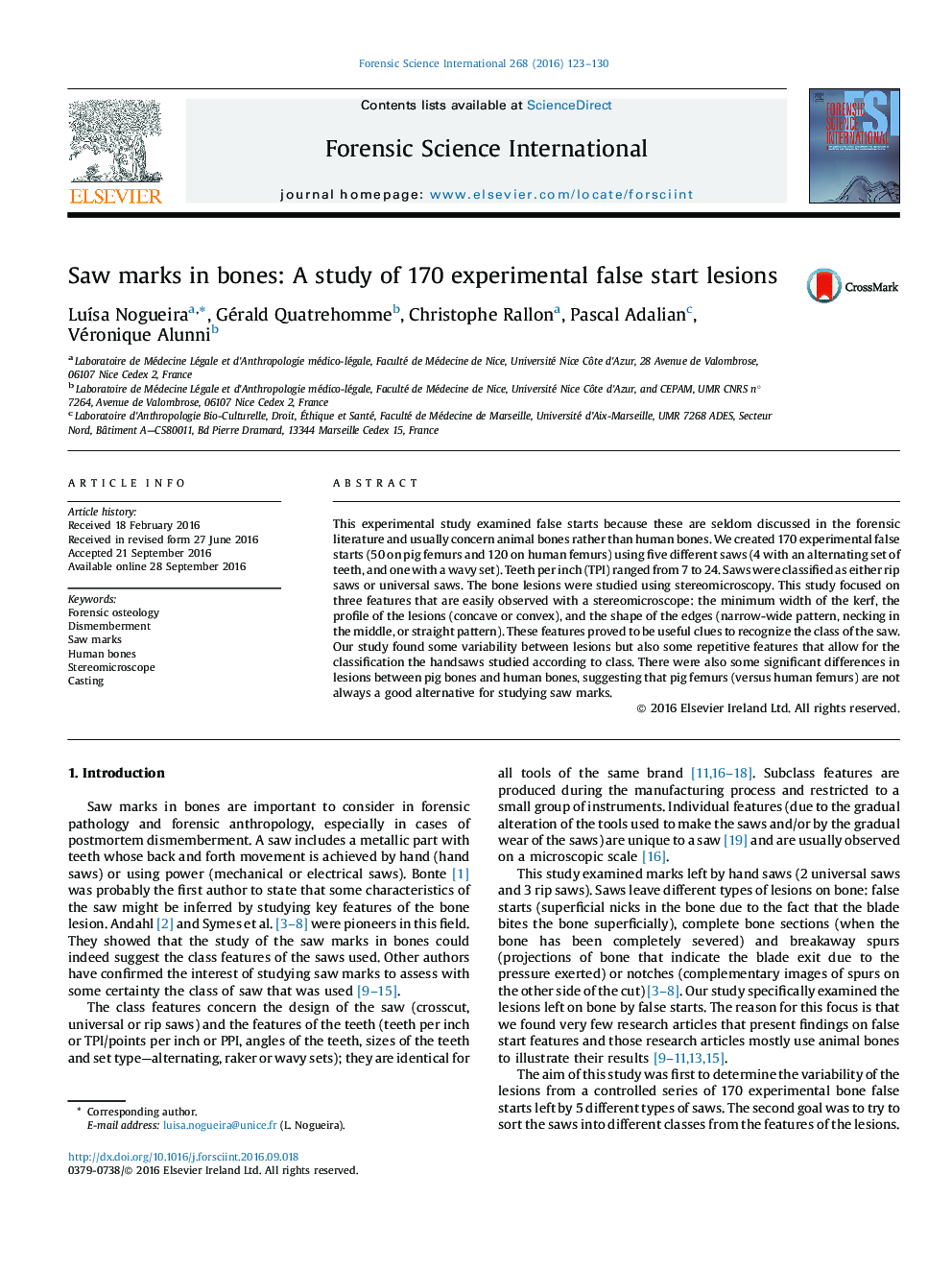| Article ID | Journal | Published Year | Pages | File Type |
|---|---|---|---|---|
| 4760382 | Forensic Science International | 2016 | 8 Pages |
â¢Comprehensive study of false starts (5 saws) by stereomicroscopy.â¢Casts were made to analyze the profile of the bone lesions.â¢The stereomicroscopic study reveals repetitive features but also some variability.â¢The study of saw marks allows for a useful classification of the handsaws studied.
This experimental study examined false starts because these are seldom discussed in the forensic literature and usually concern animal bones rather than human bones. We created 170 experimental false starts (50 on pig femurs and 120 on human femurs) using five different saws (4 with an alternating set of teeth, and one with a wavy set). Teeth per inch (TPI) ranged from 7 to 24. Saws were classified as either rip saws or universal saws. The bone lesions were studied using stereomicroscopy. This study focused on three features that are easily observed with a stereomicroscope: the minimum width of the kerf, the profile of the lesions (concave or convex), and the shape of the edges (narrow-wide pattern, necking in the middle, or straight pattern). These features proved to be useful clues to recognize the class of the saw. Our study found some variability between lesions but also some repetitive features that allow for the classification the handsaws studied according to class. There were also some significant differences in lesions between pig bones and human bones, suggesting that pig femurs (versus human femurs) are not always a good alternative for studying saw marks.
